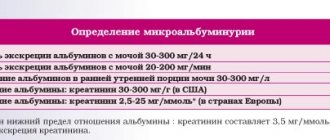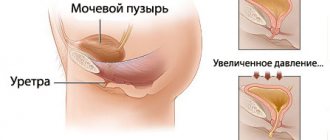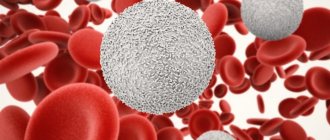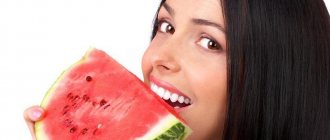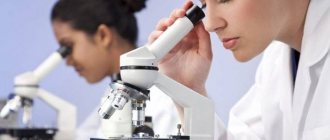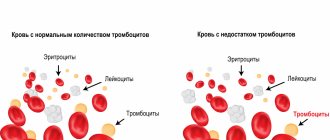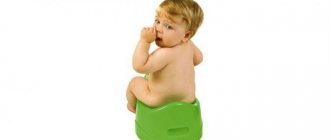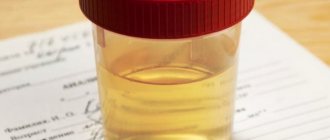General requirements for urine collection:
It is preferable to use the morning portion of urine; If this is not possible, urine collection for research is carried out no earlier than 4 hours after the last urination.
- Urine collection should be carried out before antibiotic treatment.
- The day before, do not consume colored foods (beets, carrots, blueberries, etc.), foods with dyes, including carbonated drinks, store-bought sweets.
- The day before urine collection, do not take medications (as agreed with your doctor).
- For 2-3 days, eliminate spicy, salty foods, and do not drink alcohol.
- On the day of urine collection, do not take diuretics.
- Women should not collect urine after cystoscopy, during menstruation and for 5–7 days (only in case of urgent clinical need, notifying the doctor).
When is research required?
Urine is one of the important products of human life. Water is the main component (up to 95-99% of the volume), but in addition to liquid, waste, toxins, and hormones are removed from the body.
Urine analysis is informative and can be prescribed not only during a medical examination, but also:
- to assess the effectiveness of therapy, postoperative condition;
- if you suspect some digestive problems;
- to determine a person’s condition during infections and inflammations;
- when diagnosing possible problems with metabolism;
- find out if there are any problems with the prostate gland or tumors;
- to identify pathologies of the urinary system, kidneys (pyelonephritis), liver, urinary, as well as to evaluate prescribed therapy.
The study helps to identify pathological conditions even before clinical manifestations, i.e. in the early stages, when treatment will be more effective and faster.
General analysis
Before collecting urine, thoroughly clean the external genitalia. Women should not collect material during menstruation.
- On the eve of the study, do not eat vegetables and fruits that can change the color of urine (beets, carrots, blueberries, etc.).
- If possible, do not take a number of medications (diuretics, B vitamins, furagin, aspirin, etc.).
Attention: Urine collection is carried out only in a sterile container! It is not allowed to collect urine in containers not intended for laboratory research.
According to Nechiporenko
The first morning urine (middle portion) is collected for analysis. Before collecting urine, thoroughly clean the external genitalia. Women should not collect material during menstruation.
- On the eve of the study, do not eat vegetables and fruits that can change the color of urine (beets, carrots, blueberries, etc.).
- If possible, do not take a number of medications (diuretics, B vitamins, furagin, aspirin, etc.).
Collection rules
- Write your data on the label of the urine collection container: full name, date of birth, date and time of collection of biomaterial, the entry must be made in legible handwriting.
- Start urinating and, without interrupting the process, collect an average portion of urine into a container.
- Take the sample into a vacuum tube.
Attention: Urine collection is carried out only in a sterile container! It is not allowed to collect urine in containers not intended for laboratory research.
Daily urine
Urine collection is carried out for 24 hours in compliance with the usual drinking regime - 1.5–2 liters per day.
Collection rules
- In the morning, between 6:00 and 8:00, empty your bladder (pour this portion of urine into the toilet).
- During the day, collect all urine in a special container with a volume of at least 2 liters.
- Collect the last portion at exactly the same time when collection began the day before (mark the start and end times of collection).
- At the end of the daily urine collection, mix the sample thoroughly, smoothly turning the tightly closed container 15–30 times.
- Measure and record your 24-hour urine volume (urine output).
- Using a sample transfer device from a container, collect urine into a vacuum tube.
- Label the test tube (sample number in accordance with the referral form) and submit it to the laboratory indicating the total volume of urine excreted per day.
Attention. Store urine in the refrigerator during the entire collection period.
If the analysis requires collecting urine within 10–12 hours, collection is usually carried out at night:
- Before going to bed, empty your bladder and mark the time (discard this portion of urine).
- Then urinate 10–12 hours later into a special container and deliver this portion of urine to the laboratory for research.
If you cannot hold urination for 10–12 hours, urinate into a container in several steps and note the time of your last urination.
If it is necessary to collect urine 2 or 3 hours in advance:
- Empty your bladder (throw away this portion), mark the time and exactly after 2 or 3 hours, collect urine for examination.
Before collecting 24-hour urine to determine the concentration of hormones (steroid profile), for 3 days before collecting urine, you should not use drugs containing rauwolfia, theophylline, nitroglycerin, caffeine, ethanol, chlorpromazine, contrast dyes, hydroxymethoxyphenylglycol, imipramine, phenacetin, propranolol. It is also prohibited to consume foods containing serotonin (chocolate, cheeses, bananas), and not to drink alcohol. Avoid physical activity, eliminate stress, do not smoke.
Daily urine for testing for catecholamines, metanephrines, catecholamine metabolites, C-peptide, insulin, histamine, and steroid profile can be stored at a temperature of 2–8 °C for no more than 24 hours. For longer shelf life, freeze. Can be stored frozen for up to 1 month. Delivery frozen. Do not defrost.
Daily urine for cortisol and adrenaline can be stored at a temperature of 2–8 °C for up to 14 days.
Urine for testing for the UBC-II tumor marker is stored at a temperature of 2–8 °C for no more than 24 hours.
According to Zimnitsky
The day before collecting urine according to Zimnitsky, it is recommended to avoid intense physical activity, not drink alcohol, and go to bed at your usual time.
To collect biomaterial, you must first purchase special kits from the medical center (containers, test tubes with colorful caps, adapters in the amount of 8 pieces, as well as instructions).
Collection rules
- Before collecting biomaterial, write on each container your full name, date of birth and time period for urine collection: 09, 12, 15, 18, 21, 24, 03, 06 hours. Make inscriptions legible.
- Urine collection must begin in the morning at 06:00, after completely emptying the bladder into the toilet.
- Next, urine is collected every 3 hours for a full day, the last time at 06:00 am the next day. A separate container is used for each period of time.
- Each container must be placed in a cool, dark place.
- The volume of each collected portion is measured, the urine is mixed and collected into a vacuum urine tube with a stabilizer (variegated lid).
- Label the resulting 8 tubes (full name, portion number, collection time, volume of urine excreted)*.
- The day after the last urine collection, all test tubes (8 samples) must be delivered to the CITILAB medical center.
*Follow the detailed instructions included with the urine collection kit.
PCR studies and bacteriology (infections)
Microbiological examination of urine should be carried out before starting antibacterial therapy and as soon as possible after receiving it in case of illness, since microbes contained in urine multiply rapidly at room temperature, which can give false results when determining the degree of bacterial contamination.
When examining urine for the degree of bacteriuria, no more than 2 hours should pass from the moment the urine sample is taken to its delivery to the laboratory for analysis.
When examining urine for the presence of pathogens of urogenital infections, the sample can be stored for up to 18 hours at 4 °C. When transporting urine samples, the ambient temperature must be taken into account.
Collection procedure:
The first morning urine (middle portion) is collected for analysis.
- Wash your hands and genitals thoroughly to prevent any secretions from getting into your urine. Washing should be done with warm water and soap in the direction from the urethra to the perineum.
- Dry with a clean towel.
- Women: flush the small first portion of morning urine down the toilet and fill a container with urine.
- Men: Retract your foreskin and release a small amount of urine into the toilet. Without stopping urination, keeping the foreskin retracted, fill the container with urine.
- After this, take the sample into a vacuum tube.
- Dip the holder tube into the liquid, insert the vacuum urine tube into the built-in container holder.
- Take the test tube with the stopper down, press the stopper onto the needle in the hole in the holder until it stops. Make sure the needle pierces the rubber part of the tube cap. Urine will begin to flow into the test tube, compensating for the vacuum created in it.
- Deliver the test tube with urine to the laboratory within 1–2 hours.
To ensure proper filling, hold the tube in the holder by pressing on the bottom with your thumb until no more urine flows into the tube. If urine does not flow into the test tube or the flow dries up before the test tube is filled to the mark, you must:
- press harder on the test tube to completely pierce the rubber part of its lid;
- remove the tube from the holder and thoroughly mix its contents immediately after removal from the holder in order to mix the urine sample and the preservative;
- turn the urine collection tube 8–10 times 180°;
- Dispose of the container and adapter in the household waste bin.
Urine standards
What does a good indicator indicate? Firstly, the color of the biomaterial should be transparent, light yellow. Dark with mucus impurities indicates infection, and mucus indicates the presence of leukocytes. Brown indicates liver disease; flakes are a reason to suspect the presence of cystitis. An orange or red tint indicates hepatitis, cirrhosis of the liver, cholestasis. A slightly reddish color is caused by pyelonephritis, inflammation of the kidneys, or the release of pebbles or sand. But a reddish color can indicate more serious ailments - tuberculosis, kidney cancer. Black is a sign of alkaptonuria (a genetically determined metabolic disorder). Gray or white indicate pus or inflammation. After vitamin complexes and medications, the color will turn bright yellow.
Transparent urine without sediment of a light yellow color is an indicator that the body is fine.
There shouldn't be any smell. The smell of ammonia is caused by inflammation; urine in diabetes has an acetone smell.
There should also be no foam, even when shaking. A high level of foam is characteristic of a high protein content or jaundice. This is also noted in severe shocks, impaired brain function and concussion, complications with the heart, metabolism and severe diabetes.
In acidosis, the pH is acidic, and in alkalosis, it is alkaline. There should be no presence of sugar; its excess indicates blood sugar. Ketone bodies indicate impaired metabolism, congestion with fats and carbohydrates. There is no bilirubin in the urine of a healthy person, red blood cells are within 3 in women and 1 in men. White blood cells within 6 in women and 3 in men. Epithelium – up to 10 in the field of view. Flat epithelium will be visible if the rules of general urine analysis are violated. There should be no cylinders, salts or bacteria.
The liquid should be clear, free of red blood cells, salts, and pus.
When examined under a microscope, the following are sometimes found:
- hyaline casts;
- granular and waxy cylinders;
- fungi.
Hyaline casts indicate abnormalities with the kidneys, cardiac organs, and hyperthermia. In rare cases, they are visible after prolonged physical activity, with high blood pressure, or taking diuretics. Granular cylinders confirm pyelonephritis, the viral nature of infections, febrile conditions, and intoxication with lead elements. Wax types show metabolic changes in renal tissues, kidney dysfunction in the chronic phase. In the last stage, they are unable to excrete urine normally.
There shouldn't be any fungus. If it is present, it means that there is thrush on the intimate organs in the body. Fungal infections often occur after long-term use of antibiotics and are a sign of weakened immunity.
Even if the biomaterial data is not in order according to some indicators, the doctor will never make a diagnosis, referring to only one result. He gives directions for blood tests and other studies.
Biochemistry
The tests that are taken most often are: total protein, microalbumin, glucose, creatinine, urea, uric acid, electrolytes, protein electrophoresis, etc.
Before collecting urine, thoroughly clean the external genitalia. Women should not collect material during menstruation. On the eve of the study, it is not recommended to eat vegetables and fruits that can change the color of urine (beets, carrots, blueberries, etc.), if possible, not to take a number of medications (diuretics, B vitamins, furagin, aspirin). Biomaterial is accepted only in disposable sterile plastic containers.
Hormones
The tests that are taken most often are: cortisol, C-peptide, metanephrines and normetanephrines, adrenaline, norepinephrine, dopamine, serotonin, histamine, etc.
- 3 days before urine collection, do not drink alcohol, avoid intense physical activity, and stop taking medications (in consultation with your doctor).
- The day before, do not overeat, do not eat fatty, fried, salty foods; no smoking.
To collect biomaterial, you must first purchase a special kit for collecting daily urine from the CITILAB medical center (a dark container with 3-liter graduations, a test tube with a beige cap, an adapter, if necessary, as well as instructions for collecting daily urine).
Attention: For some studies it is necessary to use a preservative, which can be obtained from CITILAB. The container with urine should be stored in the refrigerator at 4-8 °C during the entire collection time! Avoid exposing the sample to light. Keep urine out of the reach of children, as concentrated acid may be used as a preservative when collecting 24-hour urine. It is unacceptable to send urine for testing in containers not intended for these purposes, since residues of the ingredients contained in them can significantly distort the results of the analysis.
Collection rules:
- If required, place the preservative in a container until 24-hour urine collection.
- In the morning at 06:00, completely empty your bladder. Then collect all the urine during the day in 3 containers, the last time in the morning at 06:00 the next day.
- At the end of the daily urine collection, mix the sample thoroughly (smoothly invert the tightly closed container 15-30 times), then accurately measure the amount of urine in milliliters (daily diuresis), which will later need to be indicated on the tube label.
- Using a special adapter, collect urine from the container into a vacuum tube with a beige lid.
- On the label of the test tube with urine, write legibly your full name, daily diuresis in milliliters, date and name of the study. For children under 14 years of age, height and weight may be required in some cases.
- Deliver the test tube with the collected daily urine to the CITILAB medical center.
Rehberg's test
Recommended for assessing kidney function. All blood circulating in the human body enters the kidneys and is purified. Some of the filtered blood is returned to the bloodstream, the rest is excreted. The indicator of interest to the laboratory technician is the clearance of endogenous creatinine.
Analysis is carried out to monitor the functioning of the kidneys, the influence of physical activity, as well as for diseases of the endocrine system.
The amount of biological material required for analysis is 80-100 ml for adults, 10-30 ml for children.
Urinalysis is an important indicator that is taken into account when making the correct diagnosis. Get a reliable result only after preliminary preparation for the test, as well as the required volume.
Culture for microflora with sensitivity to antibiotics
Urine is collected by the patient himself and delivered to the medical center. IMPORTANT! Urine is given into a special vacuum tube, which allows you to preserve the biomaterial without loss of information content for 2 days at a temperature of 17-23 °C. Taking biomaterial against the background of antibacterial and antimycotic therapy is not recommended.
- Toilet of the external genitalia (washing) should be done with warm water and soap in the direction from the urethra to the perineum, followed by drying with a napkin in the same direction.
- Dry with a clean towel. Remove the lid from the urine container by turning it counterclockwise.
- Women: flush the small first portion of morning urine down the toilet and fill a container with urine.
- Men: Retract the foreskin and release a small amount of urine into the toilet. Without stopping urination, keeping the foreskin retracted, fill the container with urine
- Place the holder tube in the liquid.
- Insert the vacuum urine tube into the built-in container holder.
- Take the test tube with the stopper down, press the stopper onto the needle in the hole in the holder until it stops. Make sure that the needle pierces the rubber part of the tube cap. Urine will begin to flow into the test tube, compensating for the vacuum created in it. To ensure proper filling, hold the tube in the holder by pressing on the bottom with your thumb until urine stops flowing into the tube. If urine does not flow into the test tube or the flow dries up before the test tube is filled to the mark, you must: 1. Press harder on the test tube to completely pierce the rubber part of its lid; 2. If urine still does not flow, replace the tube.
- Remove the test tube from the holder.
- Thoroughly mix the contents of the tube immediately after removing it from the holder to mix the urine sample and preservative. Turn urine collection tubes 8-10 times 180°.
- Dispose of the container and adapter in household waste.
<< Return to all preparation rules
